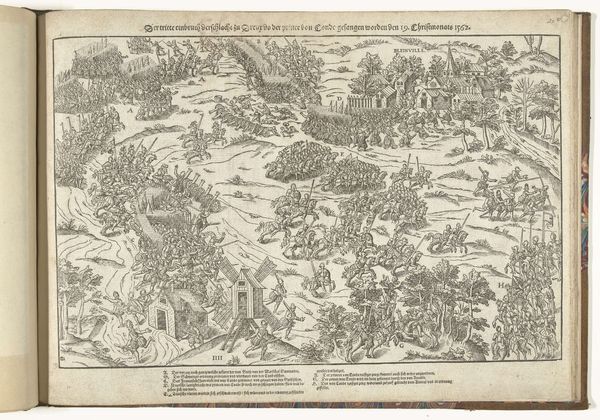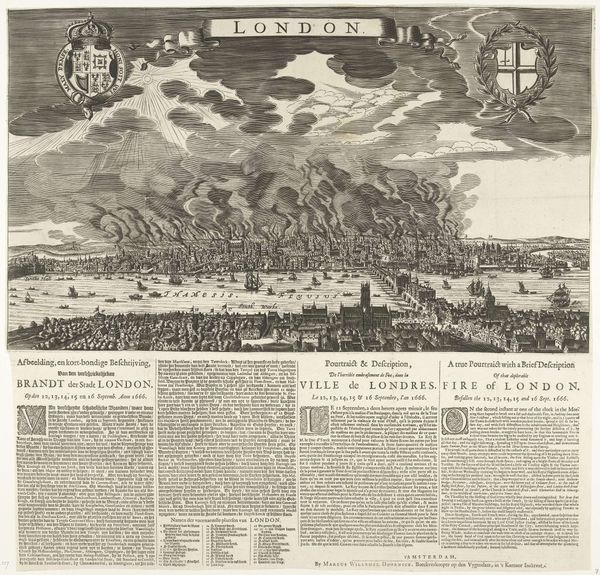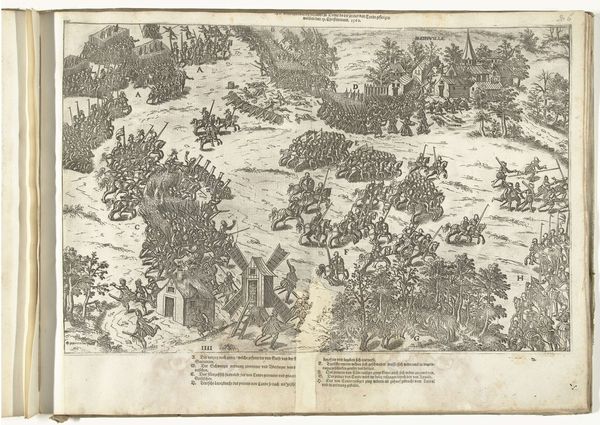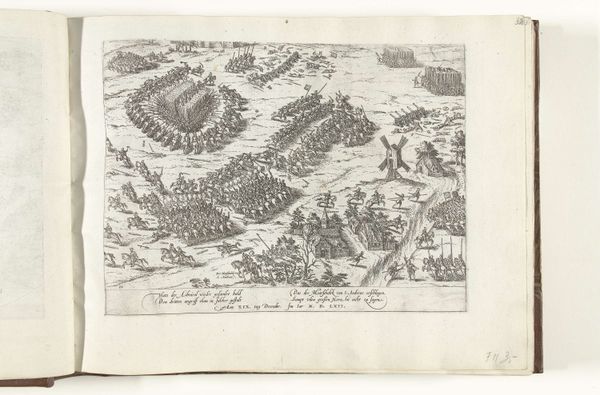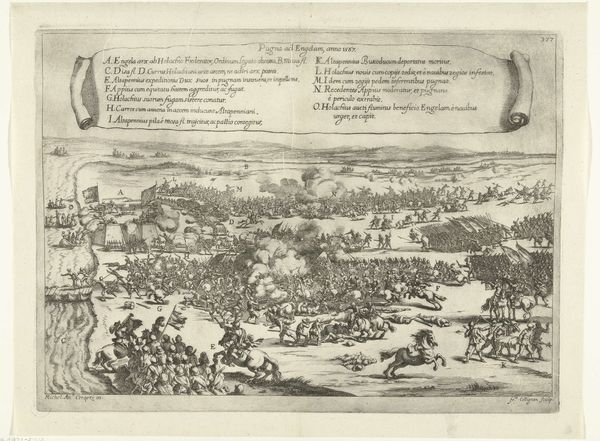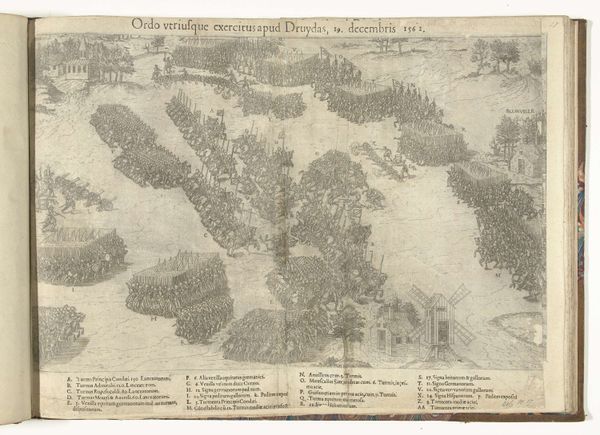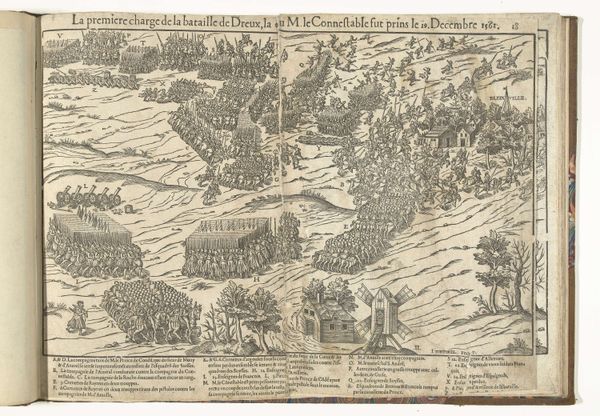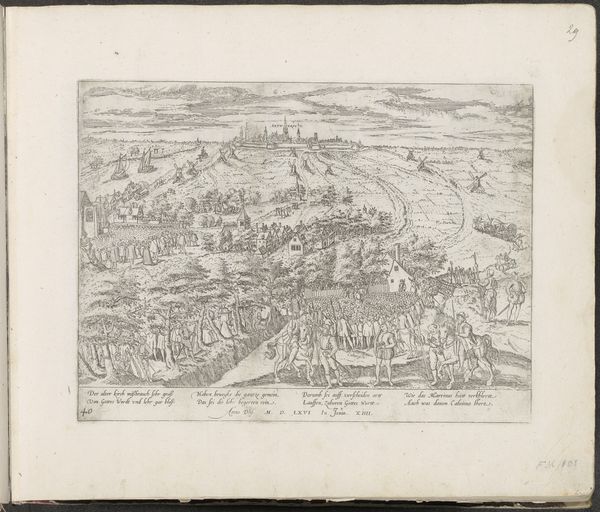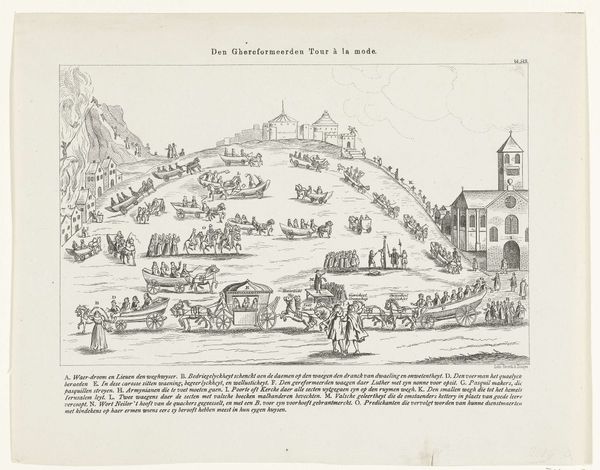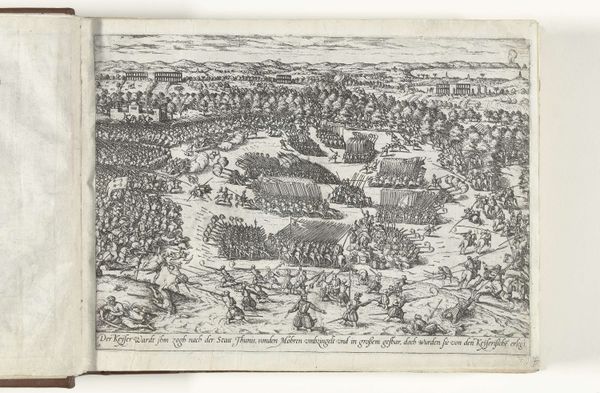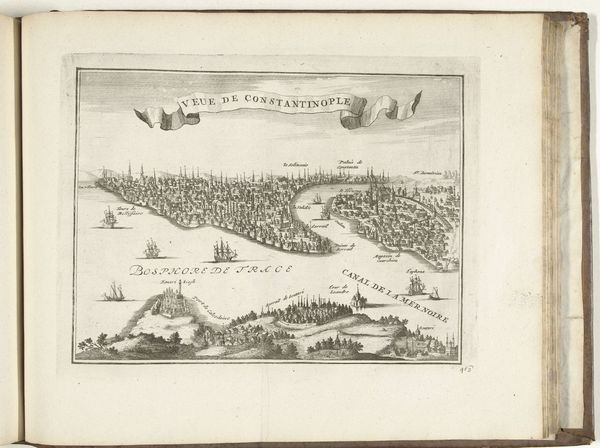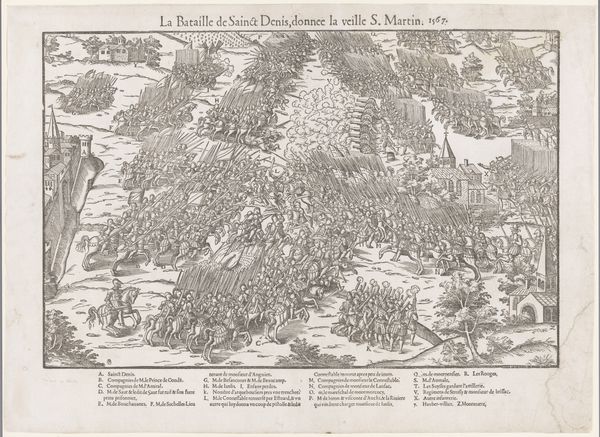
print, engraving
#
baroque
#
dutch-golden-age
# print
#
landscape
#
history-painting
#
engraving
Dimensions: height 410 mm, width 415 mm
Copyright: Rijks Museum: Open Domain
Curator: Looking at this engraving titled "De zeeslag bij Duins, 1639," dating back to between 1639 and 1640, what are your immediate thoughts? Editor: My initial reaction is a strong sense of the materiality itself – the lines, the dense textures created by the engraving process. You can almost feel the labor involved in creating such a detailed representation. Curator: Precisely. Made by Balthasar Florisz. van Berckenrode, this print, held in the Rijksmuseum, depicts a pivotal historical event, a naval battle. I’m particularly interested in exploring the socio-political ramifications embedded in its depiction of Dutch naval power against the Spanish. How does this piece, as a historical record, solidify national identity and dominance of the time? Editor: I'm drawn to the production aspect, the transfer of this information. Engravings like these were often widely circulated, turning a unique event into a mass-produced commodity, shaping public understanding, in this way revealing how warfare transforms into capital, in both material and symbolic terms. Look at the different concentrations of the ink; its about value of precision and reproducibility, to whom would these have appeal, what materials and skills involved Curator: Agreed, but more importantly it functions as visual propaganda. Consider the visual hierarchy: the Dutch ships seemingly more orderly, the depiction of military strength to project confidence in their ability to destabilize and reshape trade routes. It’s about communicating power dynamics. The baroque aesthetic reinforces these ideas, doesn’t it? Editor: Absolutely. The print is designed to be consumed. How were they created for that time. Thinking about that makes me remember about materials used for consumption that were readily at hand for many, these could provide great impact! Curator: This resonates deeply with how art functions as a means to not only reflect history, but to shape it. It urges us to reflect on art’s influence, even centuries after its creation. Editor: Indeed, seeing the material remnants allows us to ask vital questions. From the original copperplate and ink used to create a mass audience this battle has historical staying power and also cultural relevance in how people still understand how society values capital!
Comments
No comments
Be the first to comment and join the conversation on the ultimate creative platform.
